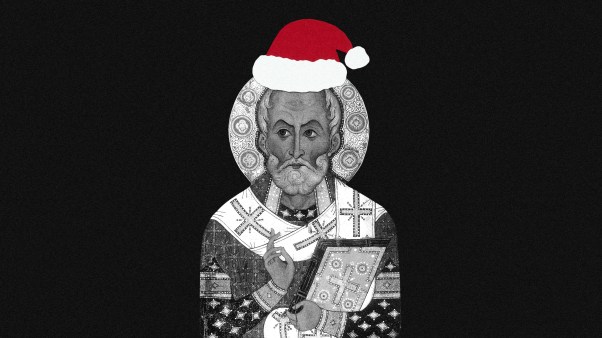What should we make of the claim in Dan Brown’s popular novel The Da Vinci Code that Constantine created the New Testament canon and suppressed 80 “gospels” in favor of the now-established four?
It is true that many works about Jesus (now labeled gospels) circulated both in the first century and later. But Brown’s claim is hardly serious history; the vast majority of Christians had been reading precisely our four Gospels as Scripture since the second century at least, as writings from Irenaeus make clear. Church authorities did not wait until Constantine to fish out gospel pretenders.
In fact, the decision to canonize certain gospels rested far more on the dependable teachings handed down from the apostles to bishops than on any imperial fiat. Irenaeus, the first bishop to identify the books of the New Testament, was a disciple of Polycarp, who in turn was a disciple of Ignatius, disciple of the Apostle John. Irenaeus narrowed the canon not according to his own whims or interpretations, but through the “rule of faith” (a loosely formulated confession of faith in the Father, Son, and Holy Spirit and the saving work of Jesus) handed down by the apostolic church.
Further, Matthew, Mark, Luke, and John differ in kind from the second- and third-century works called “gospels,” which reflect little or no apostolic tradition and do not even fit the same genre as the canonical Gospels. The four first-century Gospels we possess are, as the church long understood and recent scholarship has confirmed, ancient bioi, or “lives” of Jesus. (A bios focused on the most relevant events of a person’s life, commonly leaving gaps in the chronology.) These Gospels include many elements of Jesus’ Judean culture, Aramaic figures of speech, and so on; this differs sharply from later stories written about Jesus.
By contrast, second-century and later gospels tend to fall into two categories: “sayings-gospels” (favored especially by gnostics) and religious novels (what we usually call the apocryphal gospels). Gnostics belonged to a stream of thought that played down the body (hence Jesus’ incarnation, earthly life, and bodily resurrection). Their tastes ran more to secret teachings for an elite—what we find in most gnostic gospels. Irenaeus distinguished the canonical Gospels from gnostic ones with the observation that the four Gospels focus on Jesus’ death and resurrection, and that the writers root their claims about Jesus in references to Hebrew Scripture. Gnostics were not willing to do this.
Most other ancient gospels are essentially novels seeking to embellish the original accounts. Notably, the Jesus of many “gospels” lacks the character of the Jesus in our first-century Gospels.
Thus, for example, in the Infancy Story of Thomas (not the same as the earlier Gospel of Thomas), Jesus strikes dead a boy who bumped him. When the deceased boy’s parents complain to Joseph, Jesus strikes them blind. When another observer complains because Jesus made clay sparrows on the Sabbath, Jesus claps his hands and the birds fly off.
Most novelistic gospels were fairly “orthodox” and simply appealed to the popular imaginations of many Christians eager to fill in gaps of what was known about Jesus’ earthly life. Yet a work can be edifying and widely recommended without meeting the church’s criteria for canonicity. The canon’s Gospels had to stem from those who knew Jesus directly—or from the close associates of those who did—to guarantee authenticity.
In short, the “lost gospels” simply did not meet the standards of Irenaeus’s “rule of faith.” No 4th-century imperial directive was needed to suppress these works; the church had long ago disavowed them as Scripture.
Copyright © 2004 by the author or Christianity Today/Christian History & Biography magazine.Click here for reprint information on Christian History & Biography.










